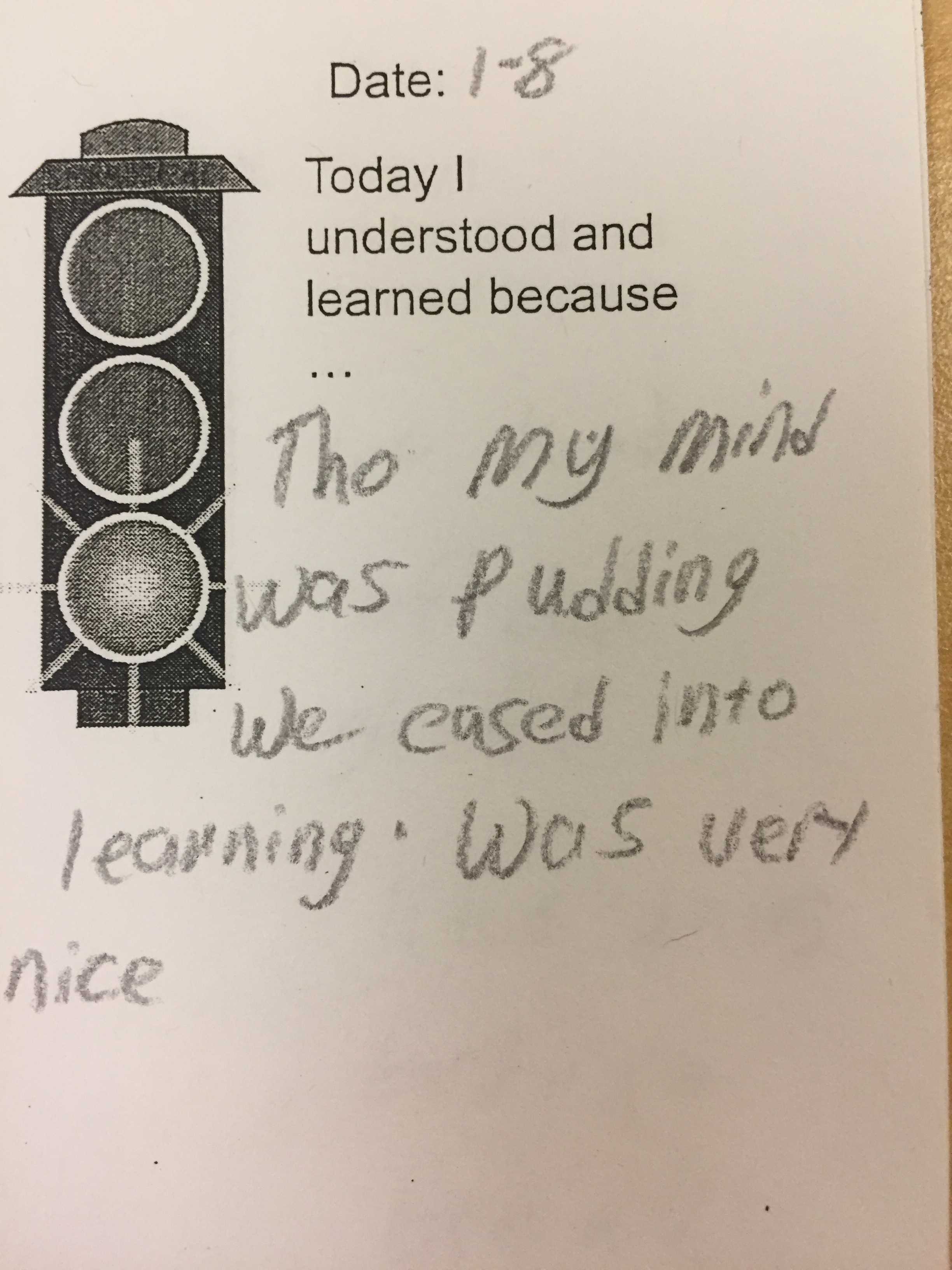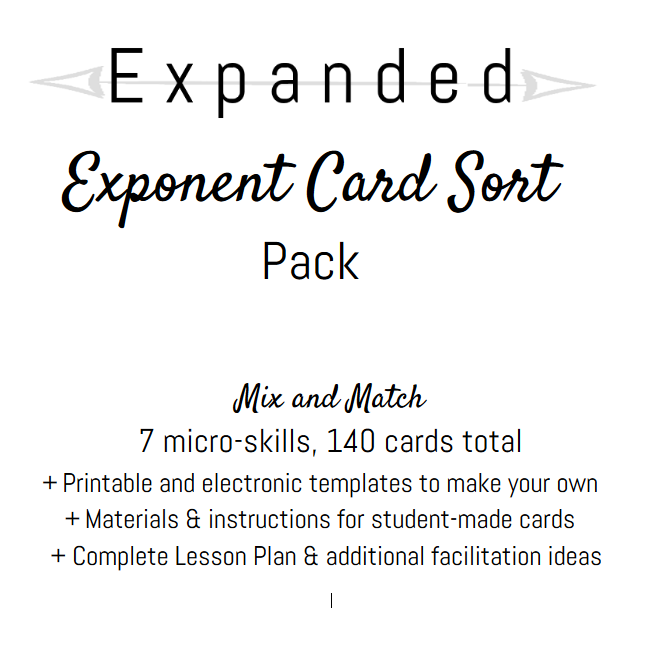Topic: Reading Algebra (CCRS: A.SSE.1a)
Why:
Half of the battle with algebra (well, some significant fraction of the battle anyways, because half is always anxiety and focus and grit and all the metacognitive things) is just reading algebra. The variables, the changes in notation and conventions, it looks so unfamiliar to new learners. And for those inclined to doubt their math abilities, a string of letters and a lack of familiar symbols is often a trigger to shut down.
So, a lesson to get used it to before we try to do anything with it.
What:
- A warm up: Sal Kahn answers a darn good question “Why all the Letters in Algebra”
- Some translation (aka direct instruction on the conventions)
- And, then the core of the lesson. A card sort. We matched cards with a x b to cards with ab, and b x b to b2, and we kept going a x b x b, and b 2, etc. etc.
(I love card sorts. I love how they prompt collaborative work, and aren’t worksheets, make things a tiny bit more tangible. I particularly love them for teaching equivalence. I wrote here about how playing Concentration is a go to activity for me)
Pro Tip: My new favorite way to make card sorts is using GoogleSlides. Subscribe to receive my tips.
- But, as much as I love card sorts, I’ve been thinking about how I could raise the bar, and ask students to do some deeper thinking (to mix directional metaphors)
So after we matched the cards, I distributed some critical thinking questions: Which were hard? Which were easy? Why do certain cards go together? What do the symbols mean? Write your own examples (because, goals )
Results: It was the first math class after vacation, and all of us were having a slow time getting back to work/school, so something like three quarters of my class conveniently, um, overlooked, the question that asked them to write with words the first time through.
But, in the end, I had one of the best student comments I’ve seen in a while:

Pudding brain. I totally get this metaphor.
Also, I take that as a victory.
(This if from my metacognitive exit tickets, read more here)
And, those extra questions? I added them in and prettied it up, and put it all on Teachers pay Teaches for the next person teaching their students to read algebra.
Fall 2020 Update: I love this activty, but found it often wasn’t enough practice on it’s own…. so I made 8 different worksheets. #onaroll #differentiation.

